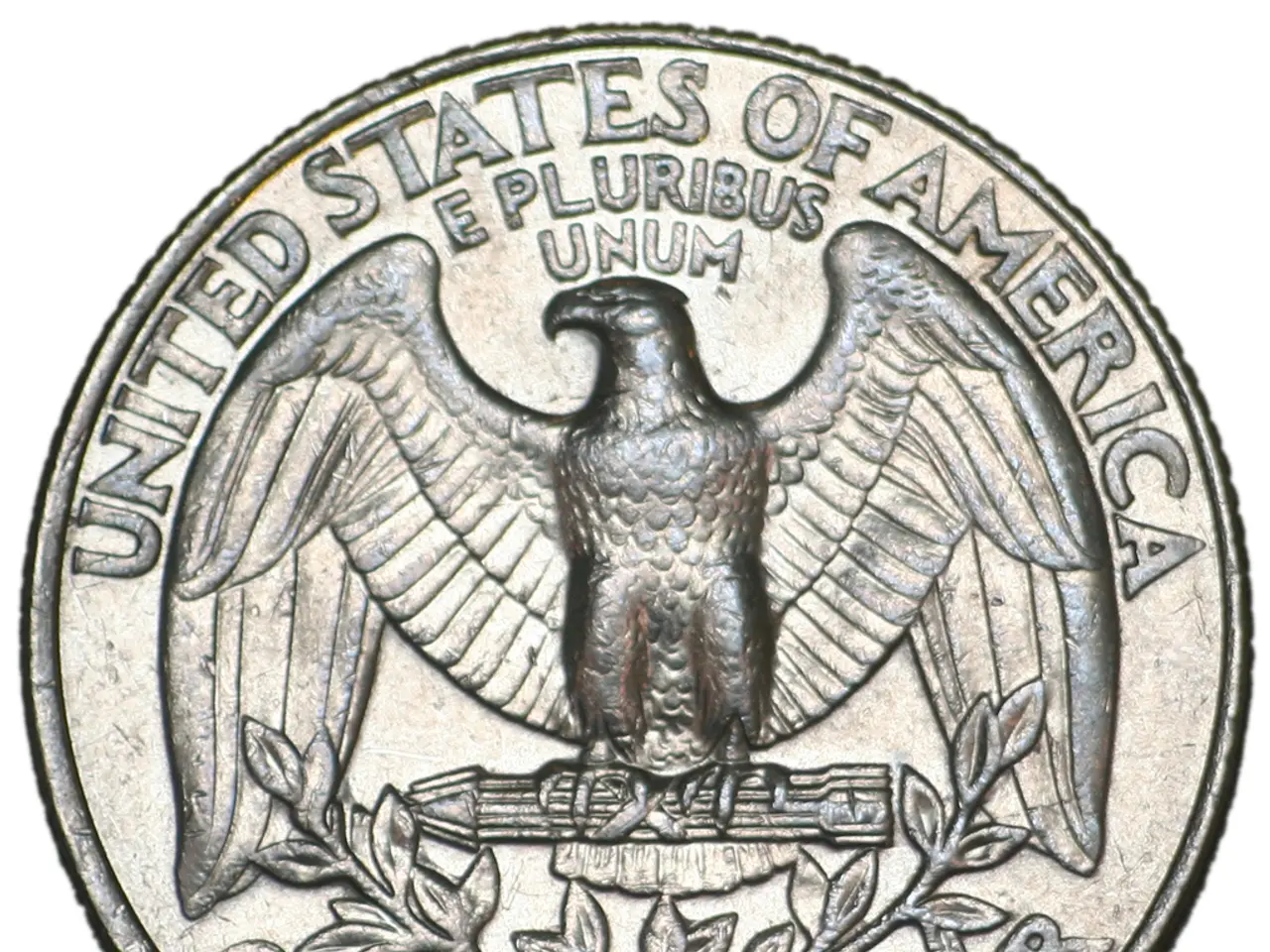Cryptocurrency earnings from Bitcoin mining reach peak monthly level post-halving, according to JP Morgan
Bitcoin miner profits soared to their highest monthly mark since the halving event in April 2024, according to recent data. This surge was primarily driven by Bitcoin's new all-time price highs, increased network activity, and rising transaction fees.
In July 2024, miners earned an average of $57,400 per EH/s (exahash per second) in daily block reward revenue, with total mining revenue reaching approximately $1.66 billion for the month.
Key factors contributing to the high miner profits include Bitcoin reaching a record high price of around $122,838, with a subsequent price retention within 8% of that peak. This boosted mining revenues directly. Additionally, increased network activity and transaction fees compensated partially for the halving's reduction in block rewards, contributing to overall revenue growth.
Ten of the thirteen major U.S.-listed mining companies outperformed Bitcoin’s price appreciation during July, indicating strong operational profitability amid the market.
However, current challenges persist. Despite the strong profits, mining revenue and gross profits per EH/s remain 43% and 50% below pre-halving levels, respectively, reflecting the impact of halving reward cuts on miner economics. Moreover, mining difficulty rose by about 9% in July, reflecting increased competition among miners and higher hashing power on the network, which raises operational costs and decreases per-EH/s returns.
Rising operational costs and the structural challenge of reduced block rewards post-halving continue to pressure miner margins. However, historically, such challenges have eventually been offset by growing fee revenue as network usage increases.
It's worth noting that the number of tokens added by the top 11 miners declined in four out of the first six months of the year (no July data available). Meanwhile, the mining difficulty increased by 9% over the month.
Net income for MARA Holdings, the world's largest miner, rose 505% to a record $808 million, partly due to a $1.2 billion gain in the fair value of its Bitcoin holdings. However, on Friday, MARA Holdings saw a 3.6% drop in its share price.
Obtaining energy for these computer networks cheaply remains a significant challenge.
[1] CoinDesk [2] JP Morgan analysts [3] CoinGecko
- The extraordinary profits of Bitcoin miners in July 2024 were significantly driven by Bitcoin's record-breaking price highs, increased network activity, and augmented transaction fees, as reported by CoinDesk.
- Miners earned an average of $57,400 per EH/s daily in block reward revenue, with a total mining revenue of approximately $1.66 billion for the month, as indicated by CoinDesk.
- Key contributors to the high miner profits include Bitcoin's all-time high price of around $122,838, the subsequent price retention within 8% of that peak, increased network activity, and higher transaction fees, as stated by the abovementioned source.
- Despite the high profits, mining revenue and gross profits per EH/s remain 43% and 50% below pre-halving levels, respectively, as pointed out by CoinDesk, indicating the impact of halving reward cuts on miner economics.
- JP Morgan analysts also report increased competition among miners and higher hashing power on the network, contributing to operational costs and lowering per-EH/s returns, as reflected by the increased mining difficulty of about 9% in July.
- CoinGecko's data reveals that the number of tokens added by the top 11 miners declined in four out of the first six months of the year, while mining difficulty increased by 9% over the month. This could be a structural concern for miners as they strive to maintain profitability amid rising operational costs and reduced block rewards post-halving.







